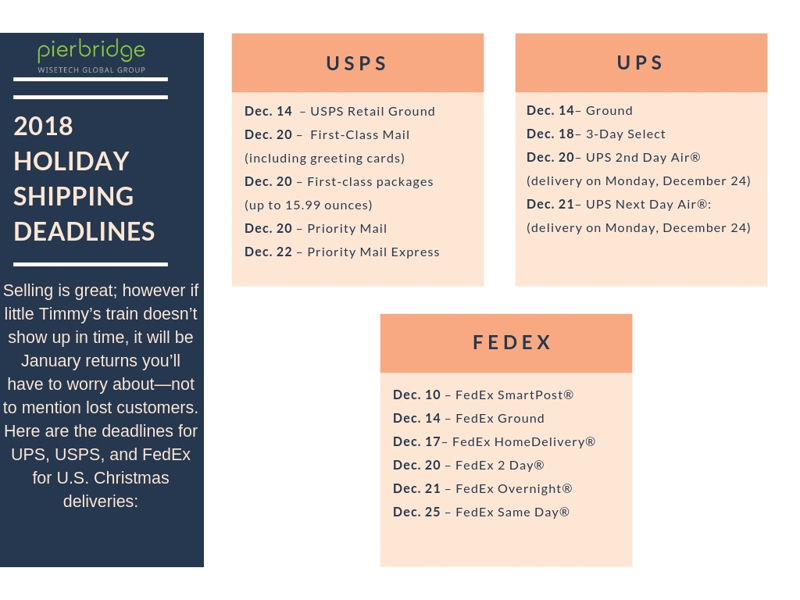While some joke about Christmas decorations on display at their local supermarket before Halloween as “being too early,” eCommerce and retail players know that it is never too early to think about the holiday season.
The retail industry banks on the holidays to meet its annual revenue targets. In fact, in 2017, the holiday season accounted for $687.87 billion in sales, according to the National Retail Federation (NRF). Of those total retail sales, $108.15 billion was spent online during the holiday season, reported Internet Retailer, making last year’s peak season busier than ever for shippers and carriers as both retail and e-tail players scrambled to deliver gifts on time to residences.
So, with all that history, what is in store (pun intended) for this coming holiday season?
This year is shaping up to be even busier according to those that track these things, thanks in part to technology. Overall, the NRF predicts that retail sales during the holidays will increase as much as 4.8 percent compared to 2017, topping $720 billion in total sales. Others anticipate even more growth.
It is expected that more orders will be placed on smartphones this year than any other device, marking the first time ever that mobile will lead the holiday shopping spree. In fact, according to a report on ZDNet quoting the Salesforce Shopping Index, 46 percent of all orders will be placed on smartphones. Further, the Index predicts that AI-based recommendations will account for 35 percent of all retail revenues.
So, with all this growth at retail—and lots of packages to ship—what do shippers need to keep in mind this holiday season?
Make Sure Your Processes are Ready. On-time holiday delivery counts. In fact, according to a ContentSquare 2017 Holiday Mood report, 35 percent of consumers were most concerned about package delays, beating out money worries by nearly 10 percent. And if that worry is realized, it can translate into lost future sales. Dropoff’s 3rd annual report found that 69 percent of shoppers wouldn’t purchase from a brand again if they received an item late. To that end, see our Holiday Shipping Deadlines chart, above, so you can keep up with the Big 3 carriers.
Pack Better (and we aren’t talking wrapping paper and bows). As we went into detail here, accessorial charges can really ding your bottom line. One of them, DIM fees, can be avoided by adding cartonization algorithm technology to help you pack better and cut down on paying to ship air (“air taxes”).
Think Local When Possible. Delivery costs continue to rise as consumers increasingly demand low-cost or free deliveries at the same time. To help cut costs and time of delivery, some retailers are acquiring new, smaller warehouse space close to their customers to shorten the journey. Drop-shipping, and better yet, having in-store pickups can also lessen the distance between where the inventory is and the end consumer.
Integrate Internal Systems with a Parcel TMS. The ability to integrate orders from an ERP or OMS system directly into enterprise parcel shipping software will cut down on paperwork, manual data entry, and errors. Uploading shipment costs and tracking information to your ERP or OMS system will help provide you and your customers with complete visibility. This is useful for customer service, claims management, and to better understand the true landed cost of goods.
The holiday season is a time of peace and joy. However, for the retail and e-tail industry, it is also a time of make or break. By getting your shipping logistics in order now, you’ll be able to ensure a season of profit for your company.
